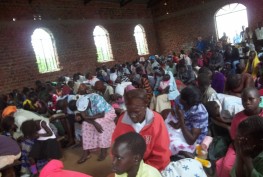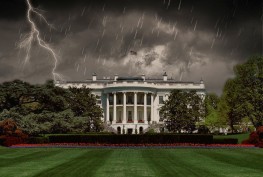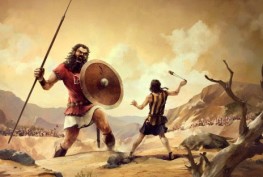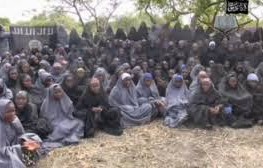
Matzah (unleavened bread) and wine are two of the symbolic foods
of Pesach (Passover).
“This is My blood of the covenant, which is poured out for many.” (Mark 14:24)
Shalom!
“And the blood shall be to you for a token upon the houses where you are: and when I see the blood, I will pass over you, and the plague shall not be upon you to destroy you, when I smite the land of Egypt.” (Exodus 12:13)
Pesach (Passover)—the first of God’s appointed seasons—begins tonight!
All over the world the Jewish People will be gathering at home with their families and friends for a special service that is always held on the first night of Passover. Some families hold this special celebration on the first and second nights!

The Haggadah, the colorful book in the above photo, is the Jewish text that
sets forth the order of the Passover Seder. It is estimated that there are over
2,000 versions of this sacred text, which is the most published Jewish text
apart from the Bible.
On the first two nights of the Festival, the story of the Exodus from Egypt is retold using a book called the Haggadah (the telling), which contains instructions for the Passover Seder (order), with all its symbolic foods, the blessings, and the Passover story.
The retelling of that story concludes with a wonderful feast.
“The LORD’s Passover begins at twilight on the fourteenth day of the first month.” (Leviticus 23:5)

Family and friends gather on the first night of Passover for the
Passover Seder.
Preparing and Purifying the House
For over a week now, we have been diligently preparing for the festival by cleansing our homes of all leaven (yeast), which is a symbol of sin, according to the commandment found in Exodus 12:19:
“For seven days no yeast is to be found in your houses. And anyone, whether foreigner or native-born, who eats anything with yeast in it must be cut off from the community of Israel.”
Such cleaning has been performed before Passover for a very long time.

This morning before Passover, all the chametz (products with yeast) that
was found during last night’s search for chametz, and anything that was
left over from breakfast, was burned.
In the Brit Chadashah (New Testament), Yeshua (Jesus) went to the Temple before the Passover Festival and cleansed it of the “leaven”—the corruption of the money changers doing business within.
“The Passover of the Jews was near, and Yeshua went up to Jerusalem. And He found in the Temple those who were selling oxen and sheep and doves, and the money changers seated at their tables. And He made a scourge of cords, and drove them all out of the Temple, with the sheep and the oxen; and He poured out the coins of the money changers and overturned their tables; and to those who were selling the doves He said, “Take these things away; stop making My Father’s house a place of business.” (John 2:13–16)

The Merchants Chased from the Temple, by James Tissot
In accordance with Jewish tradition and the Bible, Yeshua and His disciples also prepared for the Passover Seder (ritual dinner):
“Then came the day of Unleavened Bread on which the Passover lamb had to be sacrificed. Yeshua sent Peter and John, saying, “Go and make preparations for us to eat the Passover. ‘Where do you want us to prepare for it?’ they asked. He replied, ‘As you enter the city, a man carrying a jar of water will meet you. Follow him to the house that he enters, and say to the owner of the house, “The Teacher asks: Where is the guest room, where I may eat the Passover with My disciples?” He will show you a large room upstairs, all furnished. Make preparations there.’ They left and found things just as Yeshua had told them. So they prepared the Passover.” (Luke 22:7–13)
It was during this Passover Seder that Yeshua inaugurated the Brit Chadashah (New Covenant) with His disciples.
Some calculate that this meal (also known as the Last Supper) was eaten on the evening of the 13th of Nissan and that Yeshua was killed by the Romans on the 14th of Nissan as the lambs were being slaughtered for Passover that evening.
“And He said to them, ‘I have eagerly desired to eat this Passover with you before I suffer.’” (Luke 22:15)

The Last Supper: Judas Dipping his Hand in the Dish, by James Tissot
The Prophetic Significance of the Lamb
Tonight, as Jewish families observe the traditional Passover Seder meal, retelling the story of the Exodus and first Passover, they will miss deeper, hidden meanings that point to spiritual redemption through Yeshua.
It was through the blood of the lamb, which was placed on the doorposts of the homes of the faithful, that the Israelites (and some Egyptians) were saved from the last of the ten plagues—the death of the firstborn.
Anyone, even an Israelite who failed to apply the blood would have been subject to the same judgment as the Egyptians.

The Signs on the Door, by
James Tissot
On that terrifying night, this remarkable salvation foreshadowed the coming sacrifice of Yeshua the Messiah, the Lamb of God, who was slain on Passover and whose innocent blood also saves us from death and destruction.
Yeshua proclaimed this when He said, “I am the resurrection and the life. He who believes in Me will live, even though he dies; and whoever lives and believes in Me will never die.” (John 11:25–26)
With these words, He assured us that when God judges the world, we will be saved by the blood of the Lamb if we put our faith in the Messiah and the blood of redemption; God will again “pass over” us.
“The next day again John was standing with two of his disciples, and he looked at Jesus as he walked by and said, “Behold, the Lamb of God!” (John 1:35–36)

A Jewish man reads from the Haggadah during
the Seder reciting the blessing over one of the
Four Cups associated with redemption.
The Prophetic Significance of Shed Blood
“Your lamb must be perfect, a male, one year old; you may take it from the sheep or from the goats.” (Exodus 12:5)
Even though the blood of the lamb played a central part in the deliverance of the Israelites on that dark night in Egypt, the lamb is strikingly missing from the traditional Jewish Passover celebration.
Still, the Tanakh (Old Testament) makes it very clear that the cleansing of our soul can only take place through the shedding of blood.
“For the life of a creature is in the blood, and I have given it to you to make atonement for yourselves on the altar; it is the blood that makes atonement for one’s life.” (Leviticus 17:11)
Because of that proclamation from the Lord, ancient Judaism was a religion of blood sacrifice. In the Holy Temple, the blood of sacrificial animals flowed like rivers from the altar.
In modern Judaism, blood sacrifice is no longer practiced. In fact, most Jewish people are repulsed by the very thought!
The importance of the blood of redemption and sacrifice of the lamb in Egypt, therefore, has lost its relevance for the Jewish people in today’s celebration of the feast. Even so, it is an essential element of the first Passover and reveals the role that Yeshua the Messiah plays in our personal salvation.

How Yeshua Fulfill the Requirements of the Passover Lamb
Yeshua perfectly fulfilled the promise of redemption found in the Passover Lamb. Here are a few of those ways:
1. The Passover lamb was to be chosen and set apart on the 10th day of the first month of Nissan.
Fulfillment: On the 10th day of Nissan, Yeshua rode into Jerusalem on the foal of a donkey and was hailed as the King of the Jews.
2. The lamb was to be inspected for four days until the 14th day of the month for any spot or blemish that might disqualify it as the sacrificial lamb.
Fulfillment: Yeshua openly taught in the Holy Temple and synagogues until the 14th day of the month and no fault could be found in Him.
3. At the appointed time, the Passover lambs were slain by the whole congregation of Israel.
Fulfillment: Yeshua, Lamb of God, was delivered and publicly killed on a Roman execution stake as the Passover lambs were being slaughtered.

A central lesson of the Passover lamb is that its shed blood caused the wrath of God to “pass over” those who applied it to their homes.
Only the blood of the Passover Lamb can save us!
We have all been offered the free gift of being “passed over”—salvation—by faith in the shed blood of Yeshua who is our Passover Lamb and not by faith in our own works or perceived goodness.
While many people consider themselves good people worthy of going to Heaven by their own merit, the Word of God says that our righteousness is not clean by God’s holy standards:
“But we are all as an unclean thing, and all our righteousness are as filthy rags; and we all do fade as a leaf; and our iniquities, like the wind, have taken us away.” (Isaiah 64:6)

A Jewish father reads a Hebrew Haggadah with his son during the
Passover Seder.
Passover is an illustration of God’s redemptive plan for all humanity. Just as the Israelites were in bondage to slavery in Egypt, without God’s intervention, we are all under a spiritual bondage of sin:
“Every one of them is gone back; they are altogether become filthy; there is none that does good, no, not one.” (Psalm 53:3)
The good news is that the promise of Passover is still for today—for the Jew first and also for the Gentile. Yeshua gave Himself up as a Lamb to the slaughter so we could have freedom from sin and death.
“The LORD has laid on Him the iniquity of us all. He was oppressed and afflicted, yet He did not open His mouth; He was led like a lamb to the slaughter, and as a sheep before its shearers is silent, so He did not open His mouth.” (Isaiah 53:6–7)

Although machine-made matzah is square, handmade matzah is round.
The matzah that Yeshua broke at His final Seder with His talmidim
(disciples) was likely similar in appearance.
Yeshua and the Middle Matzah
Tonight as the Passover Seder is celebrated, a three-sectioned pouch called the matzah tosh will hold three whole pieces of matzah (unleavened bread).
At one point in the Seder , the middle matzah will be taken out, broken, wrapped in a white linen cloth and hidden away until the children are sent to search for it later in the Seder. Once found, that broken and wrapped piece, called the afikomen, will be brought back to the leader of the Seder to be redeemed.
It will then be distributed among the guests and family members around the table.
“And He took bread, gave thanks and broke it, and gave it to them, saying, ‘This is My body given for you; do this in remembrance of Me.'” (Luke 22:19)
Most Messianic Believers understand that this broken middle piece represents Yeshua, whose body was broken for us, and who died and was wrapped in white burial linens, hidden away in a tomb for three days and nights, and then later resurrected to life! Halleluyah!

The origin of the three matzot in the matzah tosh, and the afikomen,
remains shrouded in mystery. While its messianic symbolism seems
to have always been evident, its meaning is not discussed during the
traditional Seder.
May these words of the ancient Hebrew prophet Yeshayahu (Isaiah) reach the hearts and minds of the Jewish people at Passover today:
“But He was pierced for our transgressions, He was crushed for our iniquities; the punishment that brought us peace was on Him, and by His wounds we are healed. We all, like sheep, have gone astray, each of us has turned to our own way; and the LORD has laid on Him the iniquity of us all.” (Isaiah 53:5–6)
Although some look at the Passover narrative of Yeshua’s death and resurrection as a reason to accuse the Jews of being “Christ killers,” He plainly stated that no one took His life from Him; He willingly gave it for our redemption. (John 10:17–18)
Is is sad that Messiah’s ultimate, free-will gift on Passover, which reveals the nature of real love, has erringly been used as grounds for so much hate.
“This is how we know what real love is: Yeshua gave His life for us. So we should give our lives for our brothers and sisters.” (1 John 3:16)

A Jewish man reads from the Haggadah during the Passover Seder.
It was not simply chance or coincidence that Yeshua chose to give His life for us on the very day Passover lambs were being slaughtered.
He was clearly demonstrating that He is the fulfillment of the Passover for all of eternity.
The apostle Paul emphasized the connection between Yeshua and the Feast of Passover (Pesach) and encourages us all, whether a native born Israelites or those who have joined us through the New Covenant in Yeshua’s blood, to celebrate the feast!
“Clean out the old leaven so that you may be a new lump, just as you are in fact unleavened. For Messiah our Passover also has been sacrificed. Therefore let us celebrate the Feast, not with old leaven, nor with the leaven of malice and wickedness, but with the unleavened bread of sincerity and truth.” (1 Corinthians 5:7–8)

Please pray that the veil will be lifted and that the Jewish People will see Yeshua as the fulfillment of the Passover Lamb at this festival time.
Though we were dead in our trespasses and sin and so undeserving of being called His friends, in the immensity of His love, He reached out to us and offered us eternal life.
On this first day of Passover, may we once again be overcome with gratitude for all that Yeshua suffered for on our behalf.
Chag Pesach Sameach (Happy Passover) from all of us here at Bibles For Israel! May you be blessed and find great joy in this wonderful Festival of Unleavened Bread.




